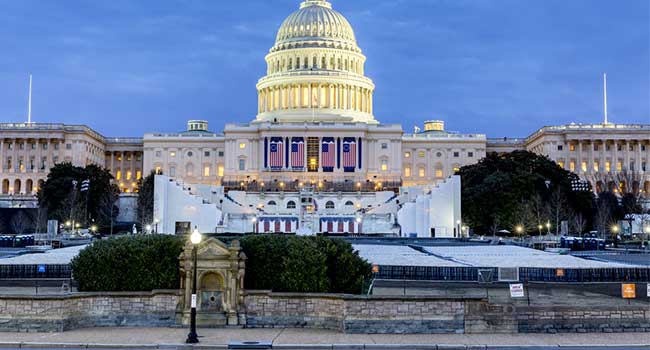
Inauguration Security: Washington Prepared for Anything
Law enforcement officials in Washington D.C. are ready for any and all threats on Saturday, January 21 when Donald Trump will be sworn in as President of the United States.
The security for the Inauguration will be intense, as 28,000 members of U.S. law enforcement deploy countermeasures to prevent large truck attacks, lone wolf attacks, anti-organization disruptions and more creating a security stronghold made of roadblocks, armored vehicles, and police.
Three thousand police officers from across the nation are expected to show up for duty on the day before the big event and an additional 5,000 members of the National Guard will be deployed. The numbers are roughly the same as those asked to secure the event in years past.
An estimated 700,000 to 900,000 people are expected to be in Washington D.C. to watch Trump become President with 63 demonstration groups, pro and con, expected to arrive as well.
Directory of the Secret Service Joseph Clancy believes that they will have to be prepared for just about anything because people are “more willing to do things they may not have been willing to do in the past.”
For example, bike racks or metal barriers used to act as an invisible shield to keep people out of security zones, but as we saw several times during the presidential campaigns and recent riots in U.S. cities, citizens are no longer put off by metal barricades. It takes no thought at all for people to jump over them or use a vehicle to plow through them.
For the Inauguration, Clancy says there will be a perimeter around the event site with hard and soft portions to let in official vehicles. The perimeter will be built using trucks, dumpsters, buses and similar objects and will be off limits to non-official vehicles. The soft openings will be heavily manned by law enforcement and only authorized vehicles will be allowed to pass through.
The Secret Service has not received any credible threats towards the Inauguration, but they are beefing up security to defend against common threats they’ve seen in the world recently, such as vehicle attacks. The Secret Service believes the perimeter around the event area will help to dissuade someone from using a vehicle in an attack.
Clancy said the kind of threat they are expecting the most is disruptions from an anti-government/anarchist groups. He believes they may be planning to run onto the stage, or create an auditory disruption during the proceedings and are not afraid of using violence to do so. Police, FBI agents and Secret Service will be posted around the event area to ensure a disruption does not occur.
Security measures have also been taken against anyone wanting to fly a drone around the site of the Inauguration. The District and surrounding areas are designated “no drone zones.” The Secret Service warns that No Drone Zone violators could face a fine up to $1,414 for individuals and $32,140 for companies. They will also have all of their equipment confiscated.
According to the United States Capitol Police, the open carrying of firearms is prohibited in the District of Columbia, and to carry a concealed firearm you must have a D.C. issued concealed carry permit and be in compliance with applicable requirements, restrictions and prohibitions under the law. Even with a valid District of Columbia issued permit, a permit holder is still prohibited from carrying in certain designated areas, to include, but not limited to, demonstrations, federal buildings, the National Mall, the White House complex, the U.S. Capitol Grounds, and gatherings or special events open to the public including the Presidential Inauguration.
In addition to physical security, the Secret Service is also looking into cybersecurity for the event. Clancy told a congressional oversight committee on March 17, 2016 that “the lines of cybersecurity are increasingly blurred,” requiring the Secret Service to train for possible cyber attacks on high profile events. Cyber teams have been scouring the web for threats as well as working to create secure networks for the teams to communicate through during the event.
The security for the Presidential Inauguration has been planned by several teams for many months, having thought through any and all possible areas for concern. Clancy says his team is ready for anything.